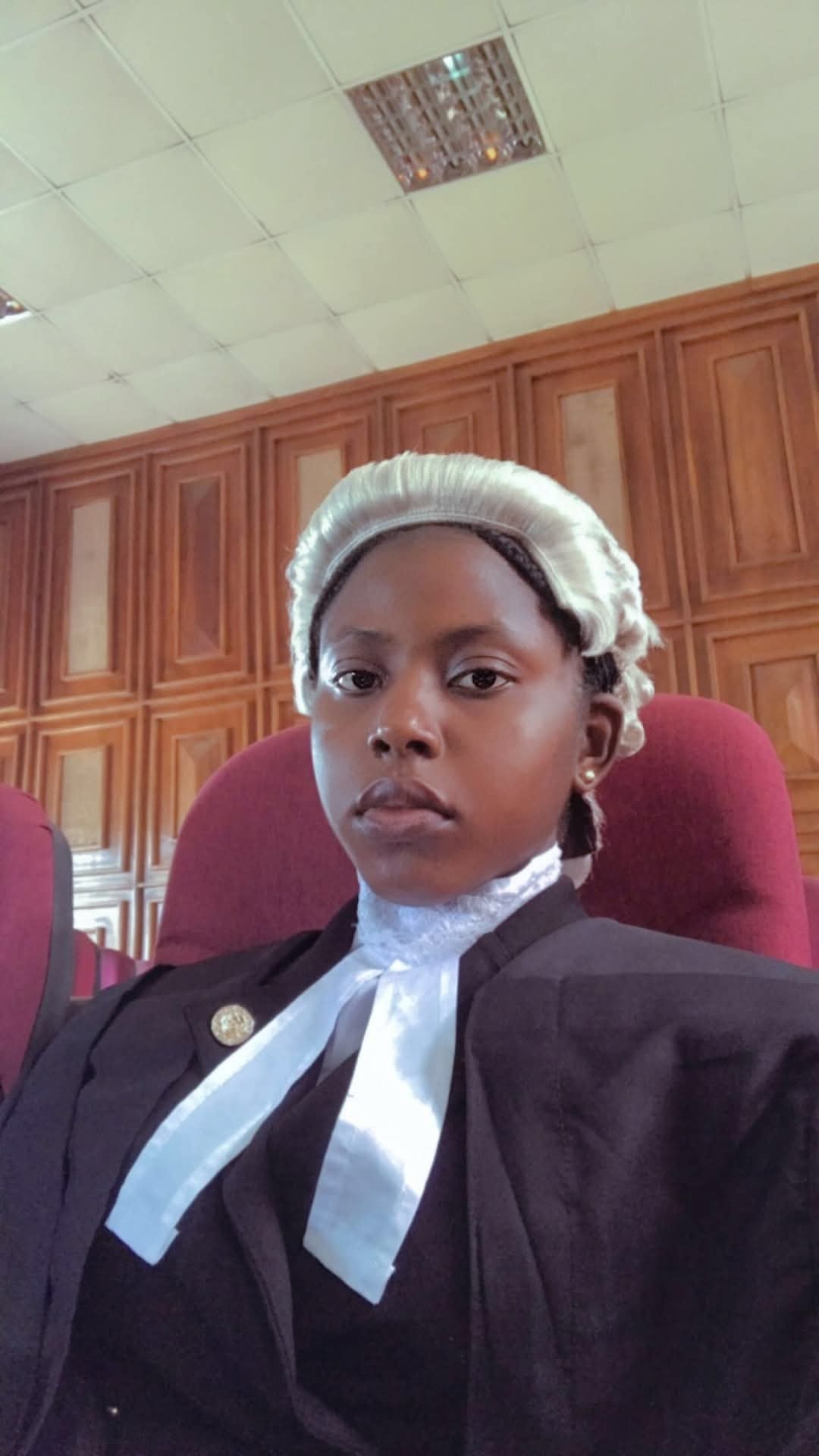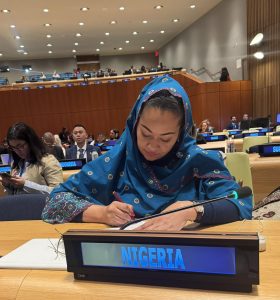24 cases on today’s court list, 22 are divorce petitions. Just one courtroom, all in one day” – Barr Wendy
In the bustling, fast-paced world of legal practice, there are days that stand out, not just because of the volume of cases but because of the stark realities they reveal about society. Today, Barr. Wendy Okosa, a practicing lawyer, took to social media to share an eye-opening reflection on her experience in court. In a post that resonated deeply with many, she detailed her day, during which 22 out of 24 cases on the court list were divorce petitions, all scheduled in just one courtroom on a single day. Her words raised important questions about the state of marriage today and the role lawyers play in both witnessing and sometimes facilitating the unraveling of relationships.
Barr. Wendy’s commentary was not just a lament about the challenges of her profession, but also a reflection on the alarming trend she sees in her practice. She noted that as much as she has seen it all as a lawyer, the overwhelming majority of cases she deals with are divorce-related, which makes her pause and reflect on the broader societal implications. “Unfortunately, even I stepped into court today to put asunder for marriage, but I can’t say no to a client’s case,” she wrote. However, Barr. Wendy expressed her concern not for herself or her workload but for the institution of marriage itself. Her post struck a chord with many who wonder: Is there a solution? Can anything be done to salvage this trend?
The sheer volume of divorce petitions flooding the courts every day is a reflection of the shifting cultural and societal values around marriage. Where once marriage was seen as an unwavering commitment, the contemporary world has seen a sharp decline in the stability of relationships. But why is this happening? And more importantly, what can be done to address it?
One significant factor contributing to the increase in divorce cases is the growing expectation of personal fulfillment from marriage. People no longer view marriage solely as a social contract or as a lifelong duty, but rather as a partnership that should bring happiness, self-actualization, and personal satisfaction. This shift in expectations, while empowering in some respects, also puts immense pressure on individuals to maintain an idealized vision of what a marriage should be. When the reality falls short of those expectations, the disappointment can often lead to divorce.
Another contributing factor is the changing roles of women in society. As women become more financially independent and career-driven, many are no longer reliant on marriage for security or social standing. In this context, divorce may be viewed as a viable option when marriage no longer meets a woman’s needs or desires. The dynamics of marriage today are far more complex than they were in previous generations, and many couples struggle to navigate these complexities.
Barr. Wendy’s statement that “the best people to marry are lawyers, they’ve seen it all and learned by example!” might have been made with a touch of humor, but it underscores a serious truth about how divorce is woven into the fabric of modern legal practice. Lawyers, particularly family law practitioners, are some of the most well-positioned individuals to witness the breakdown of relationships. They handle the delicate work of untangling the legal and emotional mess that comes with divorce, custody battles, and asset division.
For these lawyers, marriage has taken on a very different meaning. Unlike many individuals who only experience the complexities of relationships within the context of their personal lives, lawyers are often immersed in the painful realities of relationships breaking down. They deal with the emotional rollercoaster, the frustrations, the anger, and the heartbreak of clients who are unable to find a resolution in their marriages. As a result, lawyers often have a unique perspective on marriage. They understand the importance of legal frameworks, but they also see firsthand the emotional cost of failing relationships.
Despite this, Barr. Wendy’s statement also highlights an ironic situation: While lawyers may be the ones to best understand the inner workings of divorce, they are also part of a legal system that facilitates the breakdown of marriages. It raises a challenging question: How can lawyers, who are well-versed in the intricacies of relationships, promote healthier marriages while also fulfilling their duty to their clients?
The role of the legal system in marriages today is a paradox. On one hand, the legal system provides the means for individuals to exit unhappy marriages through divorce. This offers a sense of autonomy and freedom to those who feel trapped in toxic or unfulfilling relationships. On the other hand, the growing number of divorce petitions reflects an increasing difficulty in sustaining long-term relationships.
For many, the idea of marriage no longer carries the same weight it once did. Legal frameworks surrounding marriage and divorce have evolved to be more inclusive and less rigid, allowing people to dissolve their marriages more easily. But is this flexibility actually contributing to the dissolution of marriages, rather than strengthening them?
The reality is that divorce laws in many parts of the world, including Nigeria, have become more streamlined and accessible. No longer is there a need to prove fault, such as adultery or abuse, in order to file for divorce. The increasing ease with which divorce can be obtained, while empowering for individuals, may also undermine the gravity and commitment that marriage once required.
This raises another important question: Do we need to rethink the way marriage is approached legally? Perhaps it’s time to introduce more educational programs or counseling services for couples who are seeking marriage or those experiencing marital difficulties. If the legal system is to truly serve the needs of society, it may need to focus more on preventing the breakdown of marriages rather than simply facilitating their dissolution.
The increasing number of divorce petitions is alarming, but it’s not without hope. While Barr. Wendy’s post reflects the disheartening trend in her practice, it also serves as a reminder that solutions may still be possible. If marriage is to be salvaged as an institution, it may require a multi-pronged approach involving individuals, communities, and the legal system.
- Promoting Marriage Education: One of the ways to address the rising divorce rate is to promote marriage education. Pre-marital counseling and relationship education programs can provide couples with the skills needed to navigate the challenges of marriage. Understanding the importance of communication, conflict resolution, and mutual respect are vital components of any successful marriage. If couples are better prepared for the challenges ahead, they may be more likely to stay together through difficult times.
- Supportive Legal Frameworks: The legal system should not only provide a path to divorce but should also support couples in trying to resolve their differences before taking that step. Mediation and family counseling can be important tools in helping couples work through their issues, reducing the likelihood of divorce.
- Cultural Shift Toward Commitment: There needs to be a cultural shift that emphasizes the value of commitment in marriage. While personal fulfillment is important, couples must understand that marriage is not just about happiness—it’s about commitment, compromise, and shared goals. This shift in mindset could help couples better navigate the inevitable challenges that arise over the course of a marriage.
- Community Support: Finally, communities play an important role in the health of marriages. Support from family and friends can provide couples with the strength and guidance they need to weather storms. A sense of belonging and shared values can often be the glue that holds a relationship together when things get tough.
Barr. Wendy’s candid reflection on the state of marriage today offers a sobering look at the challenges faced by individuals and couples in modern society. The high volume of divorce cases she sees in her daily practice speaks to a broader trend that cannot be ignored. While the legal system provides a way out of marriages that are no longer working, it also highlights a need for a deeper reflection on the institution of marriage itself. Is there hope for the future of marriage? Perhaps, but it will require a collective effort to address the root causes of marital breakdowns and foster healthier relationships in the future.
Ultimately, the institution of marriage is not beyond repair. With the right support, education, and commitment, it is possible to slow down the rising tide of divorce and ensure that marriages can stand the test of time. For now, Barr. Wendy’s words serve as both a warning and a call to action for us all.
Excerpt from Barr Wendy Okosa
24 cases on today’s court list,
22 are divorce petitions. Just one courtroom, all in one day” – Barr Wendy |
And, unfortunately, even Barr. Wendy stepped into court today… to put asunder for marriage but I can’t say No to a client case. Though as lawyers, we advise our clients to do better.
But on a more serious note, I’m deeply worried. Not for myself, but for the institution of marriage. Is there a solution? Can anything be done to salvage this trend? How do we even preach the idea of a healthy marriage in these times?
Honestly, at this rate, the best people to marry are lawyers,they’ve seen it all and learned by example!
Barr Wendy Okosa





